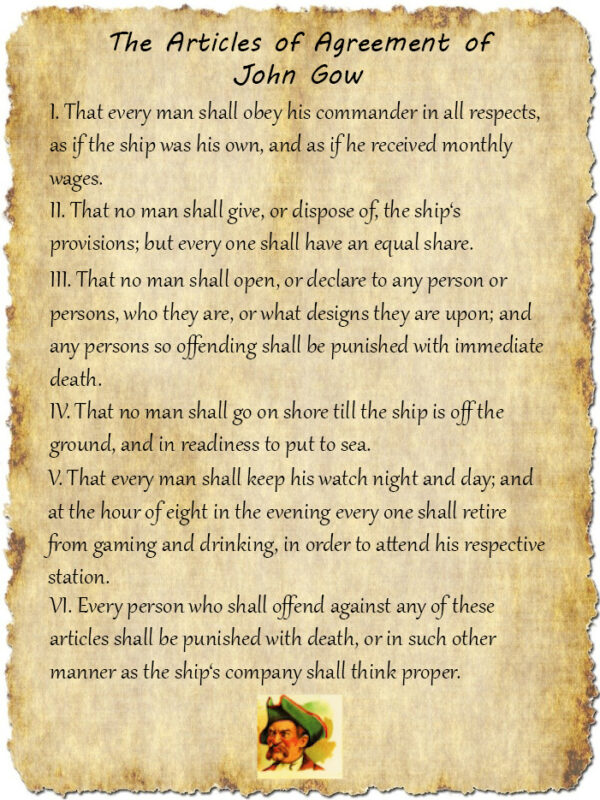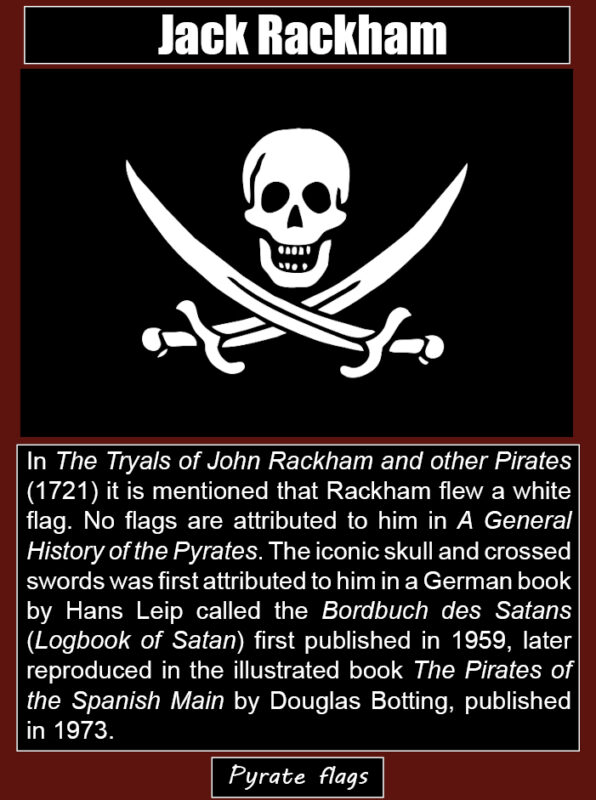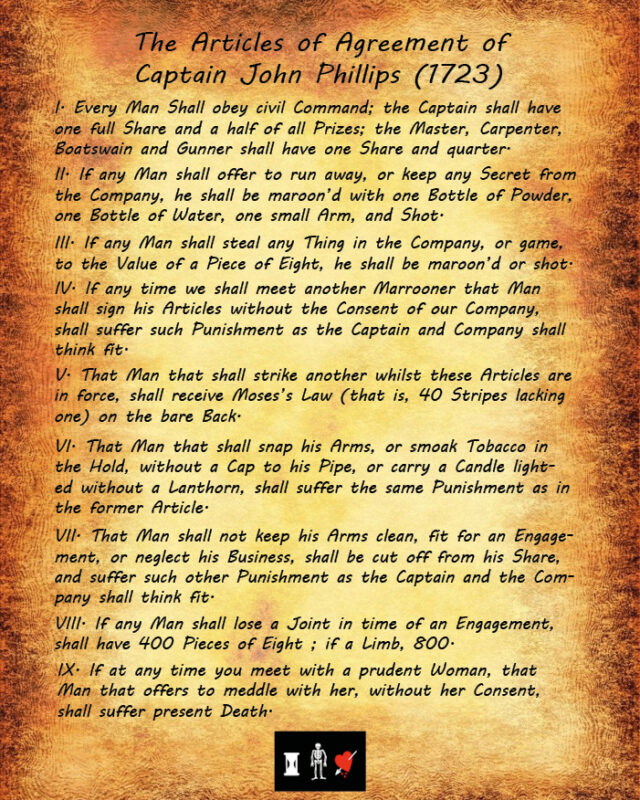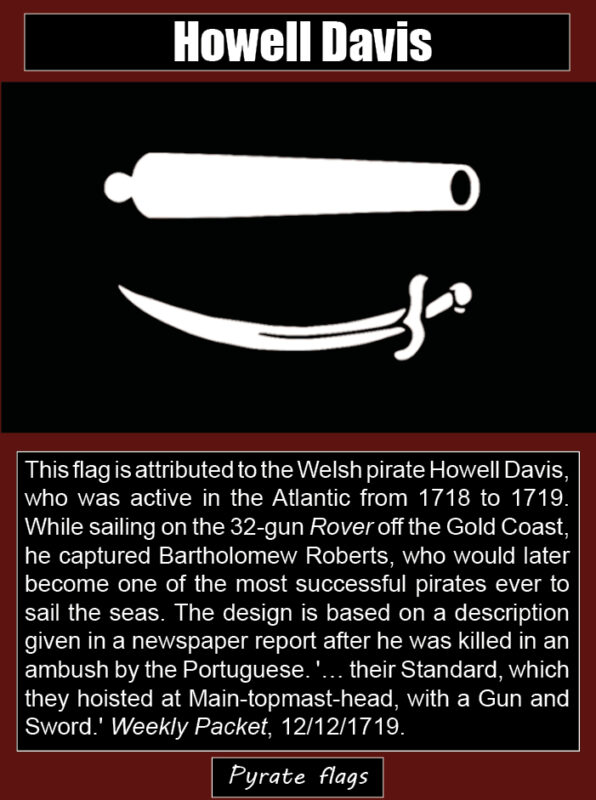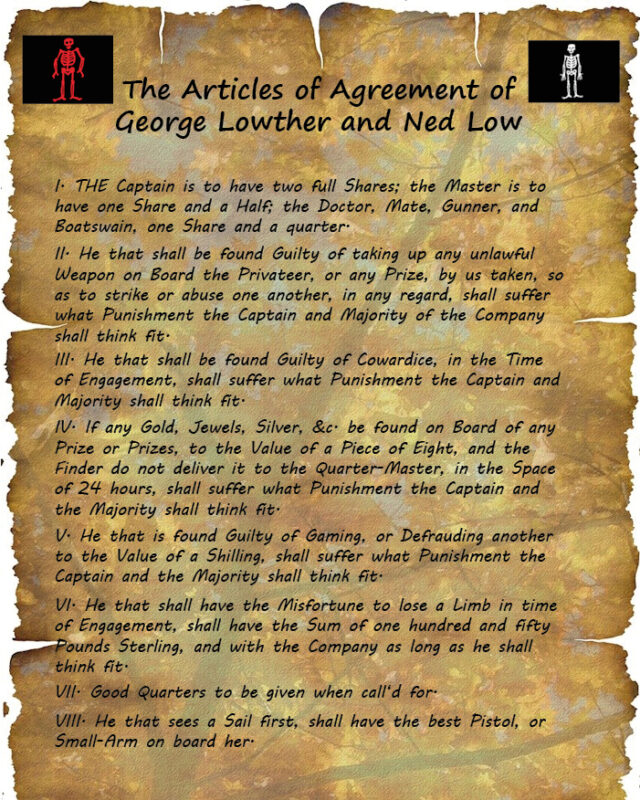John Gow was a Scottish pirate who was active off the Iberian Peninsula from 1724 to 1725. He was captured in the Orkneys and hanged at Execution Dock on 11th June 1725. His articles were written in his own hand writing and were found aboard his ship, the Revenge, not long after his capture in 1725. Evidence suggests that these articles were written only a few days before he and his crew were captured by the authorities after dangerous currents had pulled the ship onto a reef and forced it aground. Historians believe that the reference in Article IV to no going ashore “till the ship is off the ground” suggests that the ship was already grounded when this code was written.
